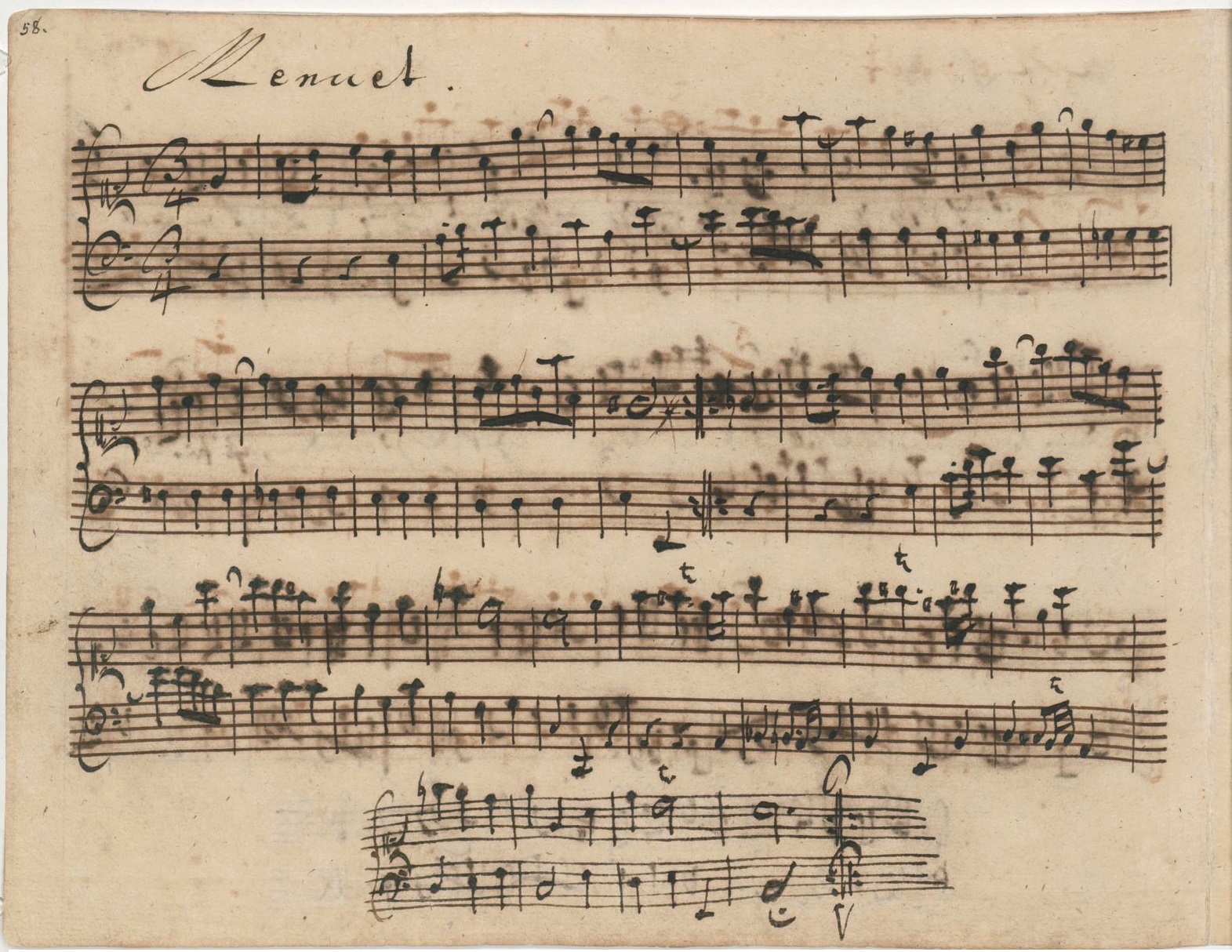

Performers give it their all to earn the enthusiasm of the audience. The final movement is often played with a sonata form, a rondo form, or a more complex combination of the two. End the evening with a bang, so to speak.
#Minuet music definition full
It’s loud and powerful, with the orchestra at full display. It’s strong, assertive, and triumphant, often played with various repeated sections and rhythms.Īfter all, this is where the composer pulls everything together building up toward a climax that’ll inspire a standing ovation or prolonged applause. The final movement is much like the first movement, except faster and more impressive. Therefore, a typical third movement appears in one of four scenarios: Other times, the trio falls in between the scherzo or minuet. In many experimental symphonies, the third movement begins with the minuet or scherzo before transitioning to the trio.

Usually, third movements follow a “one-two-three, one-two-three” music pattern. Two, it takes the form of a scherzo (directly translated as “joke”): lively, boisterous, and humorous, recalling the awkward, peasant dance quality of the form. One, it takes the form of a minuet: slow and stately, typically in triple time. The third movement is performed in two methods. The movement gains momentum and tension as it goes by, before gracefully gliding back down. It begins with the quiet call of horns followed by the slow melody of a clarinet. 36” is a great example of traditional second movements. Louise Farrenc’s second movement in “ Symphony No. Although there’s no particular rule that states that the second movement must be directly related to the opening movement, this is often the case in most symphonies.Ĭommon tempo markings found in the second movement include adagio (Italian for “slow”) and andante (Italian for moderately slow, i.e. In this movement, sonata form isn’t expected. The second movement, also known as the slow movement, follows the bluster of the first movement, except much slower and gentler, melancholy and polite. This is why it’s often called allegro, Italian for “cheerful.” Second Movement Usually, opening movements are bright and upbeat. In simpler terms, themes are introduced at the outset (exposition), developed in various ways (development), and repeated in some form or the other (recapitulation). The opening movement, also known as the first movement or fast movement, follows the formula of sonata forms-exposition, development, and recapitulation. Movement in music typically consists of four different parts: opening movement, second movement, third movement, and final movement.

There’s no set length to these divisions, some can be quite short, others extremely long. Performances with multiple movements, while sometimes performed separately, must always be performed in succession. In music, movement refers to independent sections of classical music that are part of a larger composition. Is the Audience Allowed to Clap Between Movements? What Is a Movement in Music? 33 String Quartets, and Beethoven by seizing Haydn’s initiative and turning the official symphonic scherzo into a form capable of embracing elemental drama (Symphony No. 40), Haydn by notching up the speed and substituting the term ‘scherzo’ (‘joke’) in his Op. Something of the formality of Versailles passed into what became its typical structure: an arch-like A-B-A, where B represents the central ‘trio’ section – so-called because in some early examples composers reduced the number of players to three – a distant memory of which survives in some of Haydn and Mozart’s symphonic minuets.įrom the suite evolved the symphony and the sonata, where, interestingly, the minuet survived until the turn of the 18th-19th centuries – as a middle movement in the symphony, but often as a finale in the sonata.īut composers were doing their best to shake its courtly complacently: Mozart by adding complex, driven counterpoint (Symphony No.

The court composer Lully accordingly made use of it in ballets and operas (the King no doubt appraising discreetly from the royal box), after which it began to make its way into instrumental works, especially the dance-based suite. The minuet became popular at the French court in the 1660s, where clearly the Sun King found it a useful way of auditioning female consorts. One derivation of the name ‘minuet’ relates it to the French ‘menu’, meaning ‘small’, ‘slim’ or ‘slight’, and a dainty step – particularly on the downbeat – seems to have been desirable from early on.


 0 kommentar(er)
0 kommentar(er)
